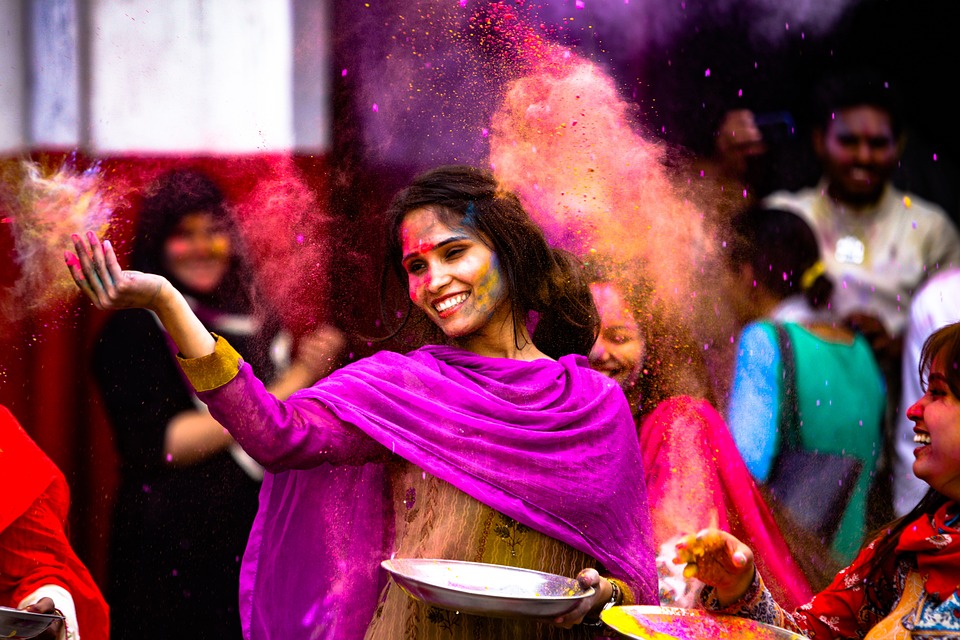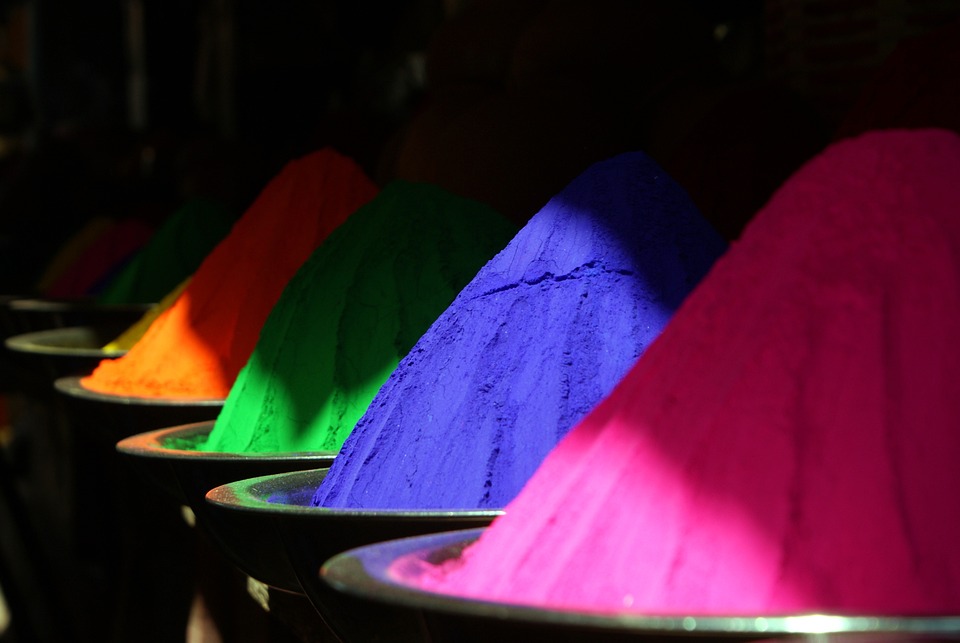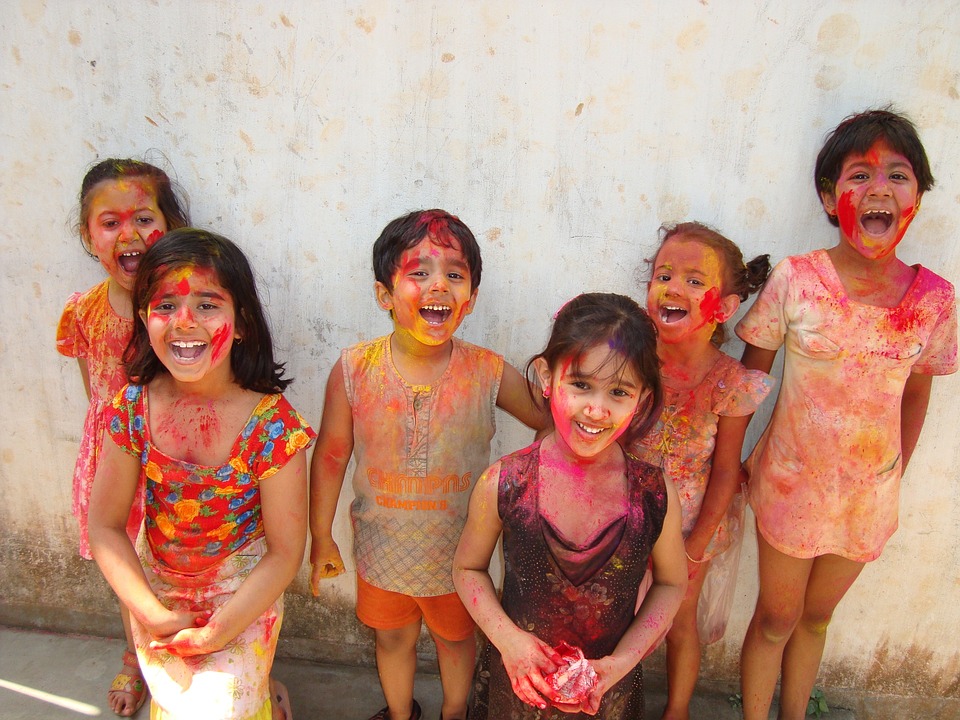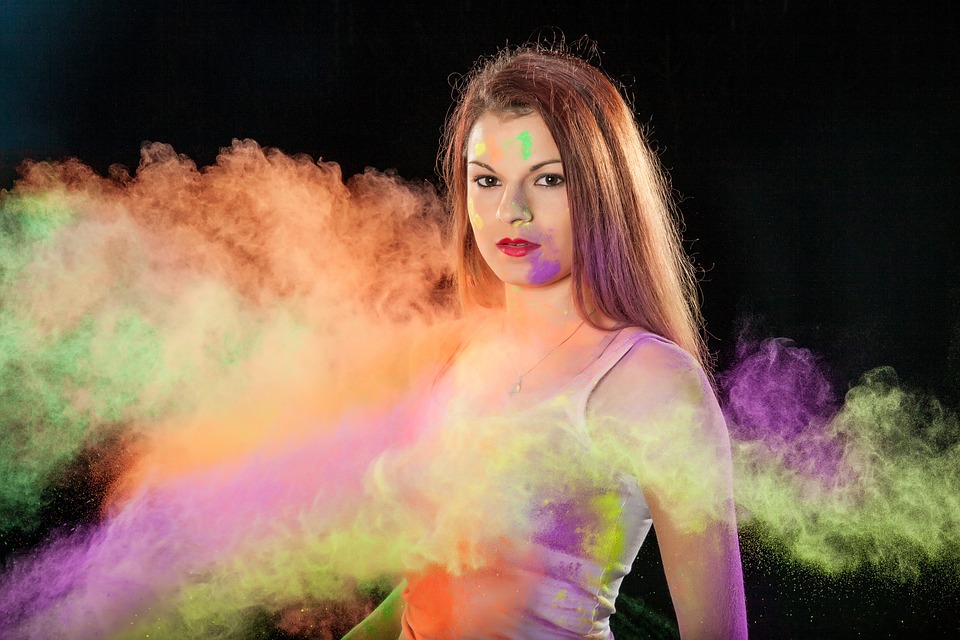Holi, the vibrant, colorful festival celebrated around the world, provides a unique glimpse into the culture and traditions of India. Every year during Holi, people take to the streets in droves, throwing powdered dye, smearing gulal (a type of colorful chalk) on each other’s faces and spraying water. This joyous celebration has been celebrated in India for centuries and is a symbol of triumph over evil. But there is much more to learn about Holi than just its vibrant colors: from the sweet taste of gujiya to the spiritual significance behind using only natural colors, explore nine fascinating things about Holi, India’s most colorful festival!
Table of Contents
The Triumph of Joy Over Evil
Holi is India’s most vibrant festival–a two-day celebration of color and joy that stretches as far back as ancient mythology. On the first night (Holika Dahan), revelers build a bonfire in public squares and parks across the nation, set a symbolic effigy ablaze, and break out into a night of singing and dancing. Then, the following morning, people from all walks of life take to the streets with brightly colored powder to celebrate Rangwali Holi.
In preparation for the festival, Indian households purchase an array of dyes and powders for the big day. These vibrant hues symbolize love, fertility, life, prosperity and more. In certain regions of India, this joyous affair is stretched out over as many as 16 days–marking a period of merriment, music and dance.
On the night of Holika Dahan, people typically gather around the bonfire wearing new clothes while performing rituals like singing prayers, beating drums, and exchanging greeting cards. The effigy itself serves to commemorate an ancient Hindu story: The victory of Lord Vishnu over an evil entity named Holika who attempted to burn Lord Prahlada alive for refusing to bow down to her. So it goes: Good triumphs over evil each year on this day.
The next day marks the beginning of Rangwali Holi when everyone takes to the streets with their colored powders. From houses to towers–everyone gets doused in vibrant shades of pink, red, yellow and green. Everyone is equal on this day –noblemen and peasants alike splash each other in playfulness as they feast on traditional snacks like gujiyas (stuffed pastries) and thandai (a cold beverage made with cannabis milk). It’s truly a scene that’s bustling with energy!
Holi

Holi gets its name from Holika, the demoness sister of evil King Hiranyakashyap in Hindu mythology. According to the legend, King Hiranyakashyap tried to forbid his son Prahlad from worshipping Hindu God, Vishnu. But Prahlad remained devoted despite his father’s orders and the king was enraged by his son’s growing devotion. He then ordered Prahlad and Holika to sit on a pyre, a wooden structure for burning a body. The night of burning was known as Holi and Holika was thought to be invincible and fire proof, making her seem almost unstoppable. However, Holika burnt to death while Prahlad survived because he called on the help of Lord Vishnu. This set a powerful example of good triumphing over evil in the Hindu belief.
Therefore, Holi celebrations serve as a reminder of good’s triumph over evil in the Hindu belief. People recall this legend each year during Holi celebrations when they gather around a bonfire and sing and dance in commemoration of Prahlad’s victory over Holika. As people take part by throwing colored water powder and singing religious songs throughout this festival, they become aware that their joy is based upon the defeat of evil.
Holi celebrates India’s strong faith in the power of righteousness and good against evil forces. It is often seen as a representation of the victory of love over hatred, acceptance over discrimination and hope over despair. Overall, many Hindus see this festival as an opportunity to honor the essence of goodness and demonstrate that good can overcome evil with enough courage and dedication.
Enjoy the Sweet and Savory Taste of Gujiya this Holi Festival!
Gujiya is a delicious and sweet dumpling-like dessert that is loved by families across India. While the ingredients used to fill gujiya vary, common ingredients include pistachios, cashews, coconut, and raisins – all of which are spiced with cardamom. Holika Dahan is an occasion when gujiya is traditionally enjoyed.
There are many variations of gujiya. Some recipes opt for a mix of both sweet and savory ingredients, while some are strictly sweet. Other versions of gujiya may even contain vegetables. Some places use Khoya – a type of dried milk – as the filling of the gujiya. It is also not unusual to see a few people adding saffron and cloves to their gujiya recipes as well.
Gujiya always has a uniquely flaky and buttery crust due to the use of maida or all-purpose flour for its outer layer. Depending on preferences, some bakers choose to add an extra layer of semolina or sooji in the outer crust for added crunch. Furthermore, some culinary artists opt to shallow fry the gujiya while others prefer deep-frying them – either way they’ll be sure to turn out crispy and golden brown.
All in all, Indian families look forward to enjoying this delightful dessert every year during the Holi celebration! Whether it’s sweet or savory, gujiya is definitely one snack that should not be missed this festival season.
Toasting to Good Times

One of the unique aspects of Holi is the tradition of toasting with a bhang–a milky beverage made with a paste of cannabis buds and leaves. The practice of consuming cannabis has been a part of Hindu mythology for 3,000 years, and is even connected to the monk god, Shiva. In some parts of India, cannabis grows naturally and traditionally in the Himalayas. During the festival, people consume their bhang from government-run bhang shops.
Though the bhang milkshake is imbibed for its ritual significance and spiritual aspect, some also simply enjoy it for its intoxicating effects. Depending on what type and how much cannabis is used in the milkshake, it can have different levels of psychotropic effects ranging from mellow relaxation to heightened energy levels. Pleasurable side effects like laughter and stimulation make it an enjoyable element of Holi celebrations.
For many Hindus, this beverage is a symbolic means to honor Lord Shiva’s victory over evil. Its consumption serves as a reminder to celebrate good triumphing over bad instead of indulging in temptation or wrongdoings. While some critics argue that the use of cannabis could be a form of addiction, Hinduism reveres this drink as part of its divine culture as long as it is consumed in moderation.
Toasting with cannabis milk has been a significant element in Holi celebrations for centuries. With its spiritual symbolism and intoxicating effects, people from all around India find themselves partaking in this colorful festival and indulging in this traditional milkshake.
Gulal
Holi, India’s most vibrant festival, is a celebration of color and mischief, and the origin story behind it explains why the use of dye plays such an important role in its festivities. According to Hindu legend, Holi began when the god Krishna got a blue skin curse from a demon. He was so worried that this would make his fair-skinned consort Radha no longer love him that he went to complain to his mother Yashoda. She suggested he simply paint Radha whatever color he wanted, so Krishna took her advice and painted Radha using multihued pigments called gulal which were said to be flying in the sky. This was the beginning of what we know today as Holi, where people smear one another with colored powder and dye. To this day Hindus have continued to celebrate the festival by using gulal – powder or liquid based dyes – as a reminder of Krishna’s story.

The use of gulal is a symbolic representation of Krishna and helps bring Holi’s joyous atmosphere alive. It is also associated with open-heartedness and playfulness, two characteristics often related to Krishna himself. The sight of clouds of brightly colored dust raining down from all directions is both mesmerizing and intoxicating. No matter how young or old, people can’t help but give into the gleeful festivities and join in on the fun!
Say No to Chemical Colours
Traditionally, the powdered dyes used during Holi were referred to as gulal. Gulal was made from flowers, spices, and plants that offered medicinal benefits to the skin. Depending on the region and its cultural traditions, some of these natural ingredients included sandalwood paste, saffron, rose petals, henna, and marigolds. During the 19th century however, synthetic dyes became more popular due to their vibrant and long-lasting colors.
Today, most gulal used for Holi celebrations is manufactured synthetically and imported from China. While this is convenient for many families looking to participate in the holiday festivities, there are several health hazards associated with dyeing with synthetic powder. To combat these issues and promote more natural, plant-based dyes, the government of India launched a campaign in 2012 called “Say no to chemical colours”. The purpose of this initiative was to increase awareness of the potential risks and encourage people to buy or make their own natural gulal at home.
Unfortunately, even with this campaign in place, many people still use synthetic dyes – some of which are cheap and unregulated. In 2012, over 200 people were hospitalized due to color poisoning because they used a product that contained lead chromate. Additionally, reported cases of eczema and rashes have become more common over time due to exposure to various chemicals found in commercial dyes. For those reasons, it is always best to purchase or make your own homemade gulal using natural ingredients.
Celebrating Holi with Colors of Meaning and Spiritual Significance
The colors used in Holi have special religious and cultural significance. Red dye, for example, is used to symbolize love, fertility, and even matrimony. Likewise, blue is used to represent Krishna, while green traditionally stands for new beginnings. It’s important to remember that the colors of Holi go beyond looks alone. They are a physical representation of spiritual ideals that can be enjoyed by everyone.
Cultural historian Narayani Gupta explains that Holi began as an agricultural festival celebrating the passing of winter and the coming of spring. Gupta adds that red was used to represent the color of soil, whereas blue was chosen because it echoed the hues of spring flowers and plants. Additionally, yellow was used to signify the beginning of harvest season and remembering the dead, while green represented fertility and hope for a bountiful crop.
Today, many people around the world continue to make use of these same meaningful colors to celebrate Holi. Red is often seen as a symbol of life force energy that joins together different people as one. Meanwhile blue carries on its original religious meaning, representing Krishna and his teachings about joy and happiness. Green represents new beginnings, growth, and harmony between individuals of all ages and beliefs. In essence, each color of Holi helps remind us that we are all connected through our shared spirits.
Holi is a unique occasion where the vibrant colors we use provide more than just aesthetic pleasure – they also serve to bring us closer together as human beings. Whether we realize it or not, these bright hues are physically communicating spiritual messages throughout the entire celebration. The symbolism associated with each color goes far beyond simply looks; they are an integral part of what makes Holi such a beloved festival all over India – and increasingly around the world!
Protecting Skin and Removing Color, All Part of the Holi Celebration!
It goes without saying that Hindus celebrate Holi in the most colorful of ways, and this means that many people find themselves covered in gulal, or colored powder. Hindus are advised to moisturize their hair and skin before playing Holi, as this helps to prevent the gulal from staining them. Clothes, however, are usually not protected from staining, making it easy to identify who has been celebrating the festival!
Holi is a popular Hindu festival with millions of people celebrating every year. Prevention is always advised: applying oil and petroleum jelly to areas such as the hands, feet and face can help protect skin from staining. Additionally, plenty of soap and warm water can be used to remove any remaining colors and dye from your body before going out in public again. This surely will save you from a few stares!
Cleaning up after Holi is always a necessity, but it’s also worth remembering why all those colors have been thrown around in celebration. After all, with millions of people around the world taking part in the festivities each year, this is an incredible sight to behold that should still be cherished!
All Around the World, Holi is Alive and Well!
Holi is not just celebrated in India and other countries on the Indian continent, but in many countries beyond. Bangladesh and Pakistan also celebrate this joyous festival. What’s more, countries with large diaspora populations such as Suriname, South Africa, and Malaysia also join in on the fun every year. Additionally, many events are held in the United Kingdom and the United States annually to commemorate the special occasion. This makes it easy for folks from around the world to take part in the wonderful celebrations of Holi.

Events like Holi-fests are extremely popular amongst those living abroad. During these events, participants can experience different aspects of the festivities and taste some of the food that is traditionally associated with Holi. These include gujiya – crescent shaped sweet dumplings filled with nuts – traditional thandai – a cold drink made with spices, nuts and cannabis milk – and dahi bhalla – a lentil dish topped with yogurt and chutneys. By joining these events, people get a chance to feel connected to their homeland which makes them feel closer to home.
It is truly inspiring how people all around the world come together to celebrate this vibrant festival. Though it may be slightly different from its traditional form, Holi remains an opportunity for people from all walks of life to come together and enjoy its festivities. From playing colorfully colored powder for hours on end to enjoying tasty treats, we can all find a way to join in on the celebration no matter where we live.
Holi is a stunning celebration of joy, color, and meaning. It is a time of togetherness, sweet and savory treats, and a reminder to honor good over evil. By understanding the spiritual significance, taking safety precautions and avoiding chemicals, the festival can be enjoyed by all in India and beyond. Holi is a reminder of the power of colors, love, and togetherness.
What is Holi and how is it celebrated?
Holi is a Hindu festival celebrated in India and Nepal that marks the beginning of spring. It is a two-day festival which starts with a bonfire on the first day and is followed by a day of fun and frolic, which includes the throwing of colored powders and water at each other. The colors are believed to signify the end of winter and the beginning of the new season. People of all ages come together to join in the celebrations and partake in the various rituals that Holi entails.
When and why do we celebrate Holi?
Holi is celebrated annually in India in the springtime, usually in March or April. It is a Hindu festival that marks the beginning of spring and celebrates the triumph of good over evil. The festival is also known as the Festival of Colors, as it is a time when people splash each other with bright, vibrant colors. Additionally, Holi is a time for social gatherings, where people come together to enjoy music, feasting, and the exchange of sweets.
Is Holi a religious holiday?
Holi is an important Hindu religious festival celebrated mainly in India and Nepal. It is celebrated to commemorate the arrival of spring and a time of renewal and joy.
When is Holi in the USA 2023?
Holi in the USA will be celebrated on March 20th, 2023.
